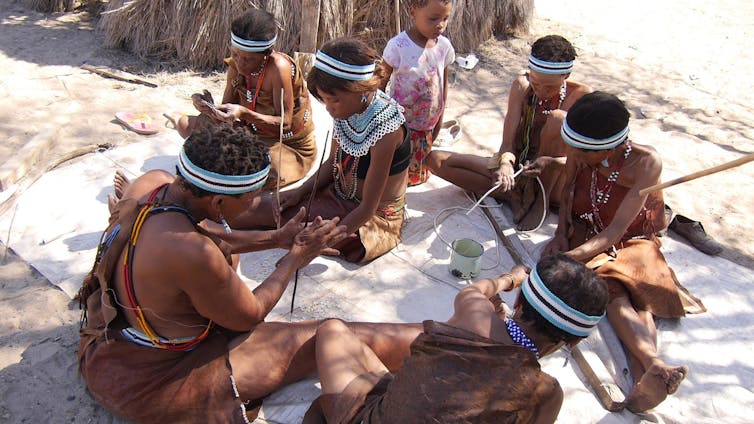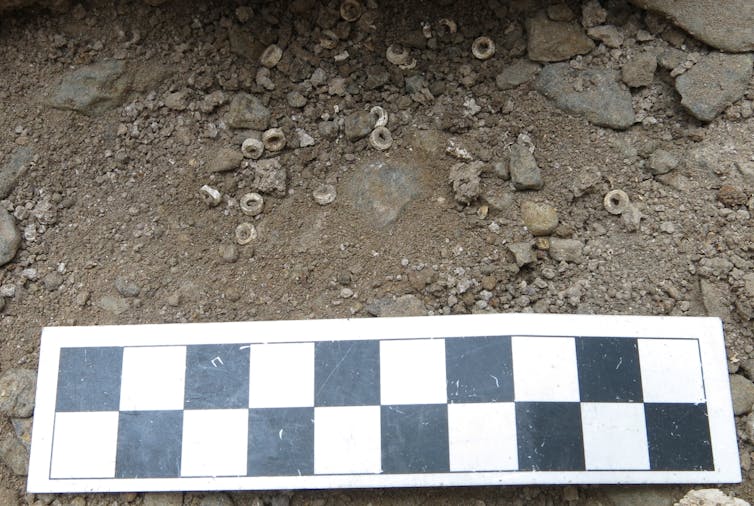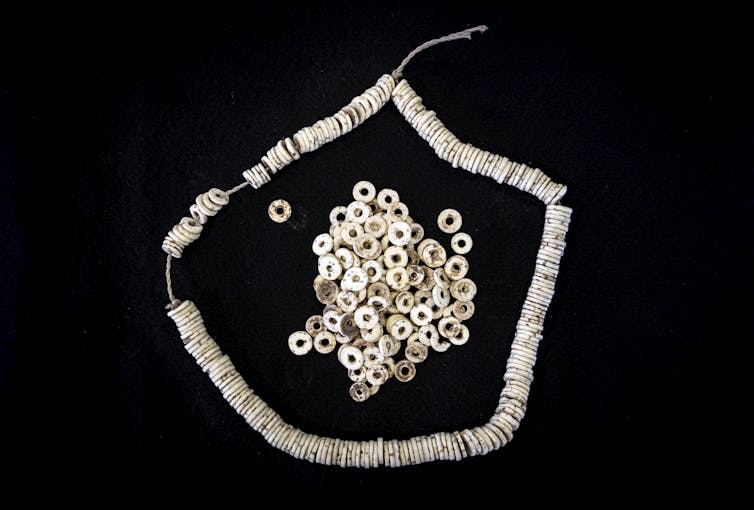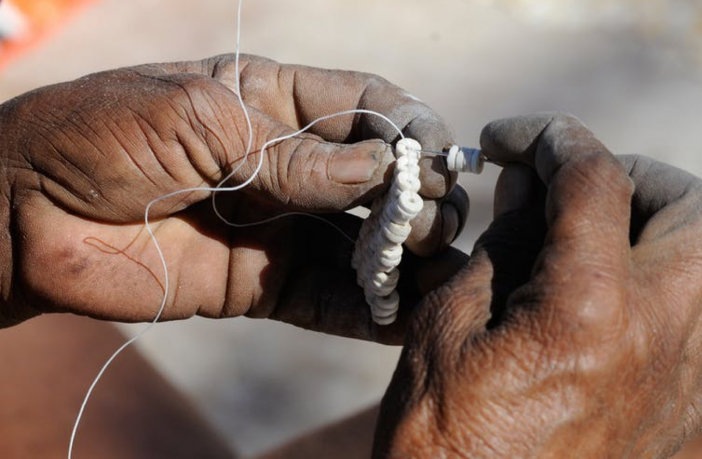Opinion
- You can tell a lot about a person by the things they wear, and this has likely been true throughout human history.
- The earliest kind of decoration was probably ochre, which we know humans have used for at least 200,000 years.
- By 75,000 years ago, people begin wearing beads.
- Since that time, ornaments and other symbols have been central to the way we express our identities and signal our relationships. In fact, this is probably one of the things that makes us human.
Ornament production really took off about 50,000 years ago, when we see the earliest standardised jewellery in the form of small disc beads made from ostrich eggshells. In Africa, ostrich eggshell beads are one of the most common type of archaeological artifacts, particularly from sites dated to the last 10,000 years. They are also found in smaller numbers throughout Asia where 12,000-year-old ostrich eggshell beads have been discovered in China.
Since ostrich eggshell bead jewellery is still produced today, this is one of the longest running cultural traditions in the world.

But what can these beads tell us about the ancient peoples who made and wore them?
In a recently published paper, we analysed 1200 ostrich eggshell beads from 22 sites in southern Africa and 8 sites in eastern Africa. Although beads are found at many African archaeological sites, they tend to be overlooked in research. Many of the bead measurements for this study were taken from decades-old, unstudied collections and are being reported for the first time. We believe that this research demonstrates the importance of studying existing museum collections and approaching old questions in new ways.
Our aim was to see how ostrich eggshell bead size has changed over the past 10,000 years. Bead size has become an informal way to estimate the age of archaeological sites in southern Africa. Yet beads overall have received relatively little attention compared to other types of artefacts and there is much we still don’t know. Our study increases the number of published bead measurements from less than 100 to over 1000, allowing us to study patterns on a larger scale and gain new perspectives on the African past.

Our findings provide important insights into how ancient peoples responded to change. Topics like migration and the economy dominate today’s new cycle. Yet ancient peoples also faced issues like climate change, cultural contact, and economic shifts. The things that people made and used, like ostrich eggshell beads, can help us understand the impacts of these changes on their lives.
Herders versus hunter-gatherers
Three decades ago, the archaeologist Leon Jacobson noticed a pattern in ostrich eggshell beads from Namibia. Those associated with hunter-gatherer sites tended to be smaller than those associated with herder sites. Since we know that herding entered southern Africa around 2000 years ago, Jacobson suggested that sites with beads larger than about 7.5mm might be younger than that.
Other studies confirmed the same pattern within the western part of southern Africa. Some researchers also argued that bead size might help distinguish which sites were used by herders versus hunter-gatherers. But this remains contested.
Until now, the idea that ostrich eggshell beads changed with the introduction of herding had only been tested in the southern part of Africa, and with a limited number of sites. We therefore decided to test this with a much larger dataset, and in other places like eastern Africa where herding also spread some 3000 years earlier.

Regional variations
At the southern African sites, we also found that larger beads appeared after 2000 years ago. However, contrary to previous studies, our data show that these larger beads did not replace long-standing bead traditions. In fact, the vast majority of ostrich eggshell beads continued to be quite small. On the other hand, beads from the eastern African sites were highly variable in size and showed no change when herding entered that region around 5000 years ago.
Ostrich eggshell beads in eastern and southern Africa seem to tell a different story about herding’s spread. Cattle, sheep and goats are not native to either of these regions and must have been introduced by contact with peoples living farther north.
In both places, groups also made ostrich eggshell beads before and after herding spread.
In eastern Africa, the lack of change in bead size could suggest that local hunter-gatherers adopted livestock, or that incoming herders possessed similar traditions and/or quickly adopted local styles.
In southern Africa, the appearance of larger beads around 2000 years ago suggests the introduction of livestock stimulated a change in bead traditions, or that new styles were introduced at the same time as sheep.
Yet in both places, local bead traditions remained dominant. Curiously, the larger beads in southern Africa fall within the range of eastern African beads, hinting at contact between these regions as suggested by other archaeological evidence and ancient DNA.
Our research findings suggest that the spread of herding into new areas did not lead to the replacement of local peoples and practices. Rather, people responded in more nuanced ways and maintained certain cultural traditions.
This research not only helps us understand the African past, but is important for considering how we as humans use culture to cope with the changes in our world.![]()
Elizabeth Sawchuk, Postdoctoral Fellow and Research Assistant Professor of Anthropology, Stony Brook University (The State University of New York) and Jennifer Midori Miller, Postdoctoral Researcher, Max Planck Institute for the Science of Human History
This article is republished from The Conversation under a Creative Commons license. Read the original article.











